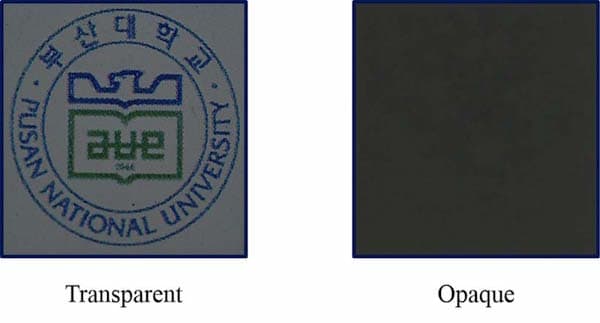Make Displays Transparent Or Opaque In A Matter Of Milliseconds
What might seem to have come straight out of a sci-fi movie, the new research work done by the South Korean Pusan National University team may leave you spellbound. Imagine sitting in your office and having a window that can be made transparent or opaque on your whim and fancy. That looks possible with the transparent light shutters developed by these researchers. It has been a dream of scientists to develop transparent displays. However, using organic light-emitting diodes to create them has been proven to be difficult. One proposed solution for this is light shutters which use liquid crystals that can be switched between transparent and opaque states by scattering or absorbing the incident light. But then, this method has its own set of disadvantages. Scattering can't provide black colour and Absorbing can't completely block the background. Moreover, they suffer from lack of energy efficiency and have very low response time on switching power on or off.
In the Pusan University research team's work, they found a solution to all these problems by employing scattering and absorption of light simultaneously. For this they had to fabricate polymer-networked liquid crystals (for scattering) cells doped with dichroic dyes (for absorbing). The light shutters has electrodes located parallely above and below the vertically aligned liquid crystals. On passing an electric field through these electrodes, the axes of dye molecules are aligned with coming light. This negates the light coming from backside, thus rendering the display opaque and the viewer can still see the screen's images.

A dye-doped PNLC cell in the transparent and opaque states,
placed on a printed sheet of paper.
The system is power efficient as power is only needed when ones wants to switch from transparent window view to opaque monitor view. Moreover, the response time is < 1 millisecond as the display's on-off switch is an electric field.
The team is now working on increase and decrease of the device's transmittance at the transparent and opaque states. They also hope to make the device more energy efficient by developing a bi-stable light shutter that consumes power only when states are being switched, instead of using it all the while at maintaining the state.
How about having a transparent display on the windshield of your car that displays the desired information while you driving? We are already hoping that our sci-fi fantasies might just come true in the years to come. When it comes to transparent displays, we remember work done by Transparent Display Systems: MIT Researchers Move An Inch Closer and undisputed king of advancements in display technology - Samsung who revealed its work in Samsung Transparent LCD Display Mass Production Begins back in 2011.
What are your thoughts about the new research work? Share with us in comments below.
Source: #-Link-Snipped-#
In the Pusan University research team's work, they found a solution to all these problems by employing scattering and absorption of light simultaneously. For this they had to fabricate polymer-networked liquid crystals (for scattering) cells doped with dichroic dyes (for absorbing). The light shutters has electrodes located parallely above and below the vertically aligned liquid crystals. On passing an electric field through these electrodes, the axes of dye molecules are aligned with coming light. This negates the light coming from backside, thus rendering the display opaque and the viewer can still see the screen's images.

A dye-doped PNLC cell in the transparent and opaque states,
placed on a printed sheet of paper.
The system is power efficient as power is only needed when ones wants to switch from transparent window view to opaque monitor view. Moreover, the response time is < 1 millisecond as the display's on-off switch is an electric field.
The team is now working on increase and decrease of the device's transmittance at the transparent and opaque states. They also hope to make the device more energy efficient by developing a bi-stable light shutter that consumes power only when states are being switched, instead of using it all the while at maintaining the state.
How about having a transparent display on the windshield of your car that displays the desired information while you driving? We are already hoping that our sci-fi fantasies might just come true in the years to come. When it comes to transparent displays, we remember work done by Transparent Display Systems: MIT Researchers Move An Inch Closer and undisputed king of advancements in display technology - Samsung who revealed its work in Samsung Transparent LCD Display Mass Production Begins back in 2011.
What are your thoughts about the new research work? Share with us in comments below.
Source: #-Link-Snipped-#
Replies
You are reading an archived discussion.
Related Posts
PLEASE LET ME KNOW THE FORMULAS/PROCESS DETAILS ON CALCULATING THE WIND LOAD ON METALLIC FENCE
Microsoft Edge is Redmond's replacement for Internet Explorer - the web browser that ruled the Internet for a painfully long time - for almost two decades! At the Build 2015...
TVS Motor has launched its glistening new motorcycle named TVS Phoenix 125 in India. The company believes that the 2015 edition of its new bike will appeal its target audience...
What is AICP government accreditation certificate,which is needed for upgrading Auto Cad 2007 educational version?can anybody guide me regarding the same?
Smartphone usage has increased tremendously across the globe. The device can even be turned into a high-resolution microscope for studying the basic building blocks of living organisms-cells. But now, the...
